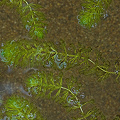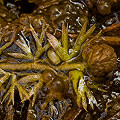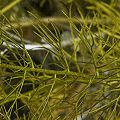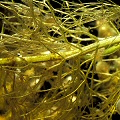Q: About sedge peat and leaf litter.
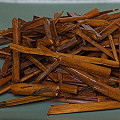 Typha
Typha
litter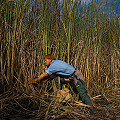 Harvesting
Harvesting
Typha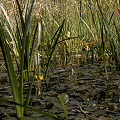 Arizona Sparganium,
Arizona Sparganium,
Typha, & Carex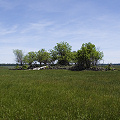 California
California
sedge-land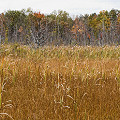 Massachusetts
Massachusetts
sedge-land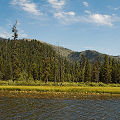 Idaho
Idaho
sedge-land
A: Sedge peat is an granular organic material made of partially decomposed sedges
(plants in the
genus Carex). I understand this is available
in Europe. I do not recommend you to
use it on acid-loving carnivorous plants, as it is too high in nutrients. However, some growers have reported have success using
"New Zealand sedge peat" on carnivorous plants. I imagine that you might use it as a leaf litter
treatment, described below.
Some carnivorous plants, in particular Aldrovanda and aquatic Utricularia, appreciate
being grown with leaf litter added to the growing medium. This is particularly true for species that often grow in fens.
The best leaf litter seems to be derived from sedges
(Carex) or cattails (Typha). I use the latter, although it is
very buoyant and is sometimes a challenge to keep submerged. Collect leaf litter in the fall, when it has naturally browned but
before it has fallen into the water. Rinse it off, chop it into small segments, pour boiling water on it, and then let it sit in
the water for a few days. Then, pour off the water and use the chunks of leaf litter in your soil mixes. I use the cattail chunks
in little mesh bags that I submerge with my plants.
Cattail may not be quite as ideal as sedge leaf litter, but all the sedge-lands near me are reasonably intact natural areas, and
I just do not feel it is appropriate for me to harvest the sedge litter. Meanwhile, cattails are common roadside weeds for me,
so I do not feel very guilty grabbing a few bagfuls.
Leaf litter is very useful in growing species such as Utricularia dimorphantha,
U. geminiscapa,
U. intermedia,
U. minor,
U. ochroleuca,
U. stygia, and
Aldrovanda.
Reflect upon how much work I put into growing these muddy little pots of lakeweed. Are you shocked by my extreme
geekiness? Do you now understand why dating was so difficult for me?
Page citations: Rice, B.A. 2006a; personal observation.
